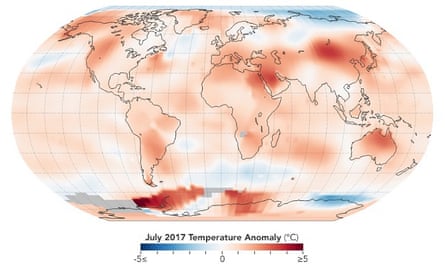The highly ambitious aim of limiting global warming to less than 1.5C remains in reach, a new scientific analysis shows.
The 1.5C target was set as an aspiration by the global Paris climate change deal in 2015 to limit the damage wreaked by extreme weather and sea level rise.
It was widely seen as impossible because analysis at the time indicated it required carbon emissions to fall to zero within seven years, a speed deemed “incompatible with democracy” by one climate economist.
However, an updated analysis using the latest data shows the global carbon emissions budget that meets the 1.5C goal is significantly bigger than thought, equivalent to 20 years of current annual emissions.
The scale of the challenge remains huge but it means that, if the world’s nations ratchet up their emissions cuts in future as intended under the Paris deal, the expected “severe, widespread, and irreversible impacts” on people and the natural world could be avoided.
“It is looking more hopeful that we can really achieve the Paris goals,” said Prof Michael Grubb, a climate economist at University College London and one of the team that produced the new analysis published in the journal Nature Geoscience.
In 2015, Grubb said the massive scale and speed of carbon cuts needed to meet the 1.5C target were “incompatible with democracy”.
But the new work has changed his mind, showing there is more room for emissions than thought. He also said carbon emissions have stopped growing sooner than expected, especially in China, and that renewable energy costs are plummeting unexpectedly quickly. “We are in the midst of an energy revolution,” he said.
Prof Myles Allen at Oxford University, who was part of the team that produced the new analysis of the 1.5C goal, said they used several methods to make a fresh estimate of the necessary carbon budget, including updating measurements of the emissions and warming that have already occurred. Previous computer models had also projected more rapid warming in the expectation that, for example, sun-blocking pollution particles would be cleaned up more quickly than it has in reality.
“A lot of people said 1.5C is simply not possible,” said Allen. But the new work revealed that for a 66% chance of meeting the 1.5C target in 2100, the budget is 240bn tonnes of carbon, assuming that other greenhouse gases such as methane are also controlled. This means the target could be met if strong action is taken. The scientists also warned that carbon cuts need to happen sooner rather than later, starting with countries strengthening their Paris pledges in 2018.
A commonly used scenario for ambitious carbon cuts, called RCP2.6 by the Intergovernmental Panel on Climate Change, projects ever bigger carbon cuts as time passes. But Grubb pointed out that this would eventually require annual drops in carbon emissions only previously seen when economies collapsed in the 1930s depression, the second world war and at the end of the Soviet Union. Instead, he said, cutting carbon by smaller amounts but starting much sooner could deliver the 1.5C goal.
Grubb said the “politics is still not easy”. But he downplayed the impact of President Donald Trump’s decision to take the US out of the Paris deal, saying other nations, as well as states and cities in the US, were pressing ahead regardless, not least because of the economic attraction of ever cheaper green energy. On Sunday, both secretary of state Rex Tillerson and national security adviser HR McMaster indicated the US is open to negotiations on staying in the Paris deal.
As the new work was published, the UK’s Met Office said that the “slowdown” in the rate of global temperature rises seen in the first decade or so of this century was over, with 2014, 2015 and 2016 all setting new heat records. In the latter two years, the world’s surface air temperature was more than 1C above pre-industrial levels for the first time.

However, increasing air temperatures only account for about 3% of the heat trapped by greenhouse gases. The other 97% is absorbed by the oceans and the rising global warming experienced by the planet as a whole has remained unchecked for decades. Evidence of this is the inexorable rise of sea levels, caused by melting ice caps and the thermal expansion of sea water.
The slowdown in rising air temperature between 1999 and 2014 resulted from a natural decadal cycle in Pacific, the Met Office scientists said. This led to the ocean circulation speeding up, enabling it to drag more heat down into the deep ocean and away from the atmosphere. But that cycle has now ended, returning temperature rises to their long-term gradually accelerating trend.
The temporary slowdown does not mean the challenge to tackling climate change will be any easier, said Allen: “The slowdown has not helped us in any way.” This is because it merely reflects a natural variation superimposed on the strong warming trend driven by the carbon emissions from human activities.
